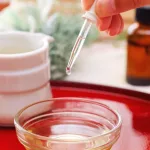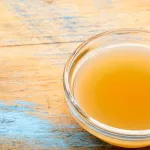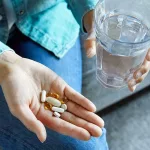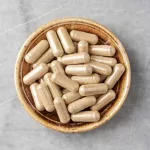If you’ve been scrolling through endless medical forums wondering whether Humira could finally ease the pain and frustration of hidradenitis suppurativa (HS), you’re not alone. In a nutshell, Humira (adalimumab) is the only FDA‑approved biologic that can cut the number of painful nodules and abscesses in many people with moderate‑to‑severe HS, often within about three months. But it’s a decision that involves more than just a prescription—it touches on your health history, your lifestyle, and even your wallet.
Stick with me for the next few minutes and I’ll walk you through exactly how Humira works, who can take it, what you might feel, and how to talk with your dermatologist so you can make a well‑rounded choice.
Quick Answer
Humira is a TNF‑α blocker used for moderate‑to‑severe HS in patients 12 years and older. It can reduce inflammatory lesions by ≥ 50 % in roughly 12 weeks, but it does not cure HS. Benefits must be weighed against infection and cancer risks, and proper dosing depends on weight and age.
How It Works
Think of HS as a fire that never quits. Your skin’s immune system releases a protein called tumor necrosis factor‑alpha (TNF‑α) that fuels the blaze, leading to painful bumps, abscesses, and draining tunnels. Humira is like a fire‑extinguisher that specifically blocks TNF‑α, calming the inflammation from the inside out.
Plain‑Language Mechanism
When you inject Humira under the skin, the drug circulates and binds to TNF‑α molecules, preventing them from attaching to their receptors. Without that signal, the cascade that causes swelling, redness, and tissue breakdown is dramatically dampened. The result? Fewer new nodules and a slower progression of existing ones.
What the Numbers Say
The pivotal PIONEER I and PIONEER II trials enrolled a total of 633 adults with moderate‑to‑severe HS. In PIONEER I, 42 % of participants on Humira achieved the primary endpoint—called HiSCR (Hidradenitis Suppurativa Clinical Response)—versus 26 % on placebo. In PIONEER II, the response jumped to 59 % for Humira versus 28 % for placebo. According to a study published in The Rheumatologist, the median time to see a meaningful reduction was about 12 weeks.
HiSCR Explained
HiSCR means a patient experiences at least a 50 % drop in the combined count of abscesses and inflammatory nodules, without an increase in the number of abscesses or draining fistulas. It’s the yardstick researchers use to say “the drug actually works.”
Who Can Use
Humira isn’t for everyone, but if you’re at least 12 years old and have moderate‑to‑severe HS that hasn’t responded to conventional treatments (topical antibiotics, oral tetracyclines, or surgery), your dermatologist may consider it.
Weight‑Based Dosing
| Weight | Loading Dose | Maintenance |
|---|---|---|
| ≥ 60 kg (132 lb) | 160 mg on Day 1, 80 mg on Day 15 | 40 mg weekly or 80 mg every 2 weeks |
| 30‑59 kg (66‑132 lb) | 80 mg on Day 1 | 40 mg weekly starting Day 8 |
These dosing schedules are taken from the official Humira prescribing information. According to Humira.com, the first injection must be administered by a health‑care professional so they can confirm you tolerate the medication.
How to Administer
Humira comes in a pre‑filled syringe or an auto‑injector pen. Rotate injection sites—abdomen, thigh, or upper arm—to minimize irritation. A quick pinch, a gentle push, and a few seconds of hold are all you need. Most people report a mild sting that fades within a few minutes.
Benefits & Risks
Every medication walks the tightrope between helping you feel better and introducing new concerns. Let’s break down the pros and cons so you can see the full picture.
Proven Benefits
- ≥ 50 % reduction in inflammatory lesions for many patients within 12 weeks.
- Improved quality‑of‑life scores in clinical trials (less pain, better sleep).
- Potential to delay or reduce the need for surgical excision.
Common Side Effects
These happen fairly often but are usually mild:
- Injection‑site reactions (redness, swelling, bruising)
- Upper respiratory infections (common cold‑type symptoms)
- Headaches, nausea, or a rash
All of these are listed on the product’s safety sheet according to the manufacturer.
Serious Risks You Must Know
- Infections: Humira suppresses the immune system, raising the odds of tuberculosis, fungal infections (especially if you’ve lived in the Ohio or Mississippi River valleys), and serious bacterial infections. Doctors usually screen for TB before you start.
- Cancers: There’s a small but real increase in lymphoma, hepatosplenic T‑cell lymphoma, and skin cancers (basal cell, squamous cell). Regular skin checks are recommended.
- Heart Failure & Neurologic Issues: Rare cases of new‑onset heart failure and demyelinating diseases (like multiple sclerosis) have been reported.
Mitigating the Risks
Before your first dose, your dermatologist will likely:
- Order a TB skin test or blood test.
- Check hepatitis B status and vaccinate against common viruses.
- Review any prior cancers or serious infections you’ve had.
- Schedule periodic blood work to monitor liver function and blood counts.
Real‑World Voices
In a recent Drugs.com review set, 26 patients gave Humira an average rating of 4.3 / 10 for HS—highlighting a split where about one‑third reported noticeable improvement, while two‑thirds experienced either limited benefit or troublesome side effects. One reviewer described severe pustular psoriasis after stopping Humira; another praised a 50 % drop in nodules after the first three months. These stories remind us that individual responses can vary widely.
Doctor Prep
Walking into the appointment armed with the right information makes the conversation smoother and ensures you get a treatment plan tailored to you.
Health History Checklist
- Any current or past infections (TB, hepatitis B, fungal exposure)?
- History of cancer or unusual skin growths?
- Recent surgeries or upcoming procedures?
- Vaccination record (especially live vaccines which are contraindicated while on Humira)?
- Current medications, including over‑the‑counter supplements?
Questions to Ask
- What exact dose will I start with, and how will it change over time?
- How will you monitor for infections or other complications?
- What are the alternatives if Humira isn’t tolerated?
- Can I combine Humira with other HS treatments, like antibiotics or laser therapy?
- What support programs are available to help with cost?
Sample Dialogue
Patient: “I read that Humira can lower the chance of serious infections. How do we make sure I stay safe?”
Doctor: “We’ll do a TB test, check your hepatitis B status, and schedule lab work every few months. If you develop any fever or cough, call us right away.”
Other Options & Lifestyle Tweaks
Humira isn’t the only arrow in the quiver. Depending on your disease severity, doctors might also suggest:
- Oral antibiotics (tetracyclines, clindamycin) for short‑term flare control.
- Surgical excision or laser resurfacing for chronic tunnels.
- Other biologics such as secukinumab (IL‑17 inhibitor) – still under investigation for HS.
- Weight‑loss programs, smoking cessation, and low‑glycemic diets that can modestly reduce inflammation.
One anecdotal report on a patient forum claimed that cutting nightshade vegetables (potatoes, tomatoes, peppers) helped her skin, but that’s not scientifically proven. If you’re curious, discuss it with your doctor first.
Cost & Help Programs
Biologics like Humira don’t come cheap. Average wholesale cost exceeds $100 k per year without insurance. However, AbbVie offers the “Humira Complete” patient‑support program, which can lower out‑of‑pocket costs and provide injection training.
How to Verify Coverage
Call the toll‑free line 1‑800‑4HUMIRA (1‑800‑448‑7242) and ask about prior‑authorization requirements, co‑pay assistance, and whether you qualify for the manufacturer’s coupon.
Financial Aid Avenues
- Full‑price coupons for uninsured patients.
- Non‑profit foundations that grant co‑pay relief.
- State Medicaid programs (coverage varies by state).
Bottom‑Line Takeaway
Humira is a powerful tool in the HS treatment toolbox. It can dramatically shrink painful nodules and improve daily living for many, but it also carries real infection and cancer risks that demand vigilant monitoring. Deciding whether to start Humira should be a partnership between you and a board‑certified dermatologist, grounded in a clear understanding of your medical history, your lifestyle, and your financial situation.
If you think Humira might be right for you, schedule a consultation, bring the health‑history checklist, and ask about the “Humira Complete” assistance program. Your skin—and your peace of mind—deserve nothing less than an informed, compassionate approach.


















Leave a Reply
You must be logged in to post a comment.